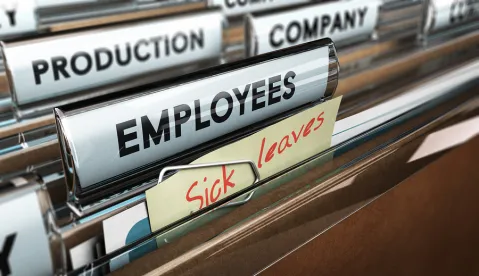Employer reaction to the September 1, 2012 implementation of the Seattle City Ordinance mandating paid sick and safe leave, is divided. Many employers are up in arms and argue that the Ordinance spells disaster for Seattle employers. Others are less concerned and assume that the Ordinance only addresses those employers who do not provide paid sick leave. The truth lies somewhere in between. There is a great deal to the Ordinance and all employers should study it closely. This short article will focus on what you need to know now.
First, determine whether the Ordinance applies to your business. It does if you have five or more employees and any employees work for any duration of time in Seattle. The definition of “work” in Seattle includes short term projects, customer sales calls, telecommuting and/or deliveries.
Second, if your business is subject to the Ordinance, you need to provide notice to employees of coverage in physical or electronic form. This can be done via a city-supplied poster if you are an employer located in Seattle. The poster is available here. If, on the other hand, you are located outside Seattle city limits, but anticipate that certain employees will be working within Seattle after September 1, you need only provide individual notice to those affected employees within a “reasonable period of time” prior to their work assignment in Seattle. Remember that eligible employees may include temporary or part-time workers. Absent timely notice posting, employers may be subject to a fine.
Third, by September 1, 2012, you need to come up with a tracking system of Seattle hours, both for internal purposes, and also to advise employees with regard to eligibility for benefits. While sick/safe leave hours for eligible employees will not start to accrue until September 1, existing employees who have already worked the initial 180-day waiting period, are eligible to immediately use their sick/safe leave time as it accrues. As a result, tracking and use issues will arise immediately after September 1, 2012. At a minimum, employers must keep records of total hours worked, accrued leave (paid sick/safe time or PTO) and used leave, ideally on the employees’ paycheck or paystubs. For Seattle employers whose employees work outside the City, these hours are not required to count toward sick/safe leave accrual under the Ordinance. For non-Seattle employers whose workers “occasionally” work inside the City, only those Seattle work hours are required to count toward both eligibility and, once eligible, accrual of safe/sick leave. As a result, tracking will be a huge administrative nightmare absent a “universal” PTO policy which creates immediate sick/safe leave for all.
Fourth, many employers are under the misapprehension that, as long as their PTO/vacation/sick leave policies provide at least the minimum number of paid days called for by the Ordinance, they do not need to do anything. The Ordinance does recognize “universal leave policies,” pursuant to which employees can use the paid leave for a variety of purposes, including sick/safe leave. It also allows employees to use paid vacation hours for sick/safe leave purposes and does not require additional sick/safe leave hours in the event the PTO or other paid leave is exhausted for reasons other than sick/safe leave. However, these “universal policies,” PTO policies or vacation policies must adhere to the sick/safe leave accrual requirements, notice requirements, and eligibility requirements to be in compliance with this Ordinance. Many existing vacation policies, sick leave policies, and even PTO policies have a one-year waiting period, which is contrary to the much-shorter 180-day waiting period discussed above. Many of these policies also require notice and condition approval on work needs, which may be at odds with the requirements under the Ordinance. Many of these policies also are at odds with the carryover requirements under the Ordinance which requires carryover to the next calendar year of unused minimums. Finally, many existing vacation and PTO policies require that the accrued hours be taken in 8-hour increments versus the single hour increment allowed by the Seattle Ordinance. These differences should be noted and incorporated into existing polices in order to avoid the need for creating a separate sick/safe leave bank.
There are also several interesting aspects of the Ordinance which minimize its effects. For employers outside Seattle who have no paid safe or sick leave policy, employees are not eligible to start accruing sick/safe leave hours under the Ordinance until they work at least 240-hours in Seattle. Time spent driving through Seattle does not count unless the employee stops and works in Seattle. Moreover, even after accruing sick/safe hours, the employee can only use the hours when the employee is scheduled to work in Seattle, unless the employer policy provides otherwise. This may not be a problem for employees assigned lengthy projects in Seattle city limits, but it may prove difficult for an employee to take accrued sick/safe leave when they are only working in Seattle on a sporadic basis.
Finally, employers should be aware that the ordinance prohibits retaliation against an employee for exercising his/her rights under the Ordinance. This means, among other things, that in general, absences covered by the Ordinance may not be the basis for discipline and cannot be counted as absences under a “no fault” attendance policy.
All in all, employers should carefully review their existing policies for compliance with the Seattle Ordinance and make sure their management staff and supervisory personnel have a good grasp of what the Ordinance requires. While the world will not end on September 1, those employers fortunate enough to do business in Seattle will be faced with an administrative headache.



 />i
/>i

